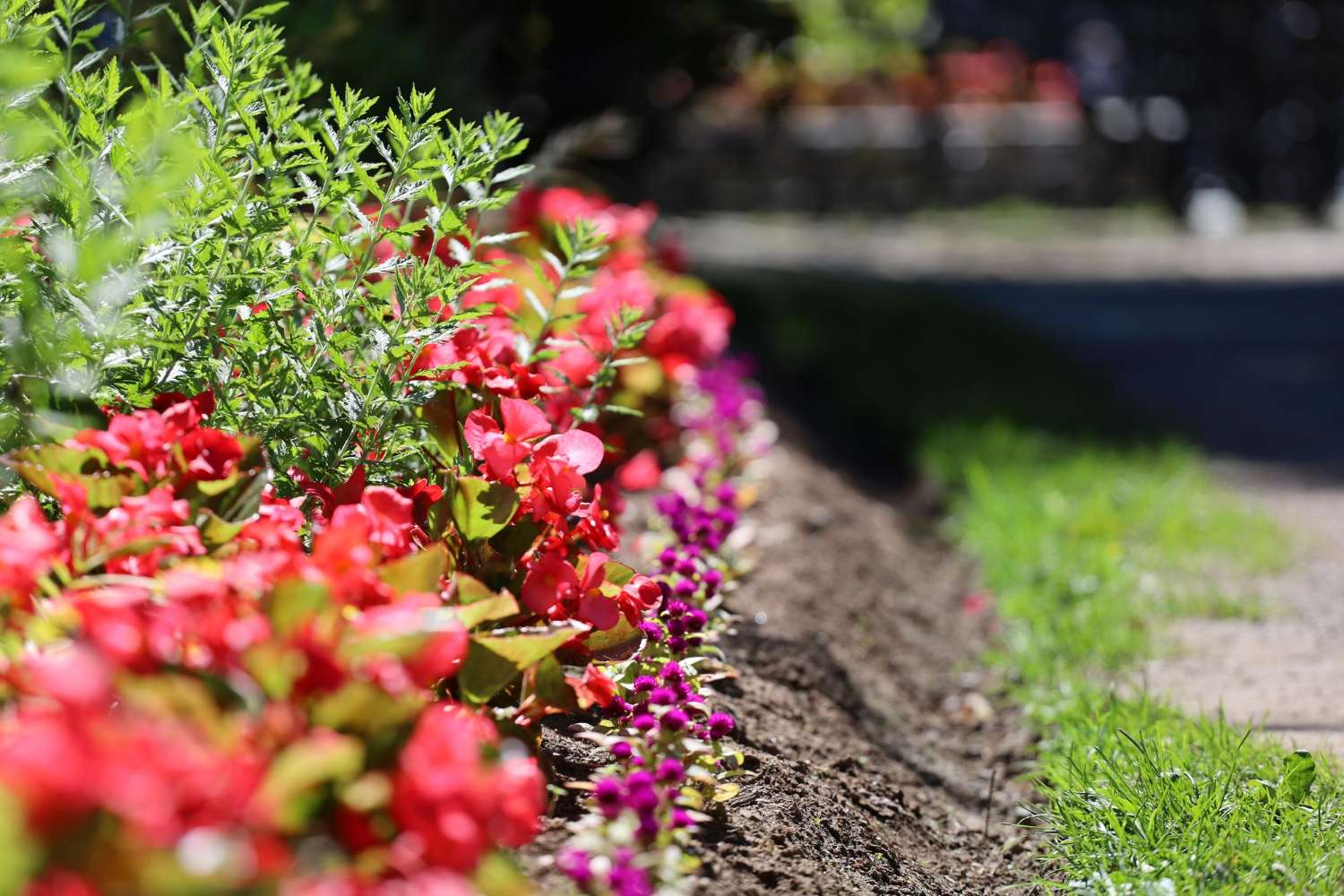How to Keep Flower Beds Blooming All Year: A UK Maintenance Strategy That Works
Flower Beds That Impress—Even in February
Flower beds are one of the most impactful features of any commercial outdoor space. But a common challenge faced by facilities managers, estate teams and business owners alike is how to keep them looking smart throughout the entire year—not just for a few sunny months.
In the UK’s ever-changing climate, it takes more than good intentions to maintain attractive, well-kept flower beds year-round. Fortunately, with the right approach, tools, and seasonal know-how, it’s entirely possible to enjoy vibrant, well-structured beds in every season—rain or shine.
In this blog, we’ll break down exactly how to keep your flower beds fresh, functional and flourishing throughout the year, no matter the size or setting.
Why Year-Round Flower Bed Maintenance Matters
🌼 First impressions count – Whether you’re attracting customers, clients or tenants, well-maintained beds project care and professionalism.
🌱 Boost biodiversity – Keeping flowers blooming supports pollinators and birds, adding ecological value to your site.
💷 Save long-term costs – Regular upkeep prevents costly overhauls later. Neglecting flower beds often means redoing them from scratch.
👃 Enhance staff wellbeing – Clean, colourful landscapes boost morale and create more pleasant environments for everyone on site.
The Key to Success: Seasonal Maintenance Planning
A well-kept flower bed doesn’t maintain itself. The secret is to work with nature—not against it—by breaking maintenance down into seasonal tasks.
🌸 Spring: Wake-Up and Refresh
Objective: Clear winter debris, prepare the soil, and refresh displays.
Spring To-Do List:
| Task | Tools Needed | Notes |
|---|---|---|
| Remove mulch and debris | Rake, gloves | Clear leaf litter, branches and weeds |
| Prune early-flowering shrubs | Secateurs | Encourage new growth and shape plants |
| Top up compost or soil | Wheelbarrow, shovel | Rejuvenates nutrients for healthy growth |
| Add new spring annuals | Trowel, planting mix | Think primroses, tulips, daffodils |
| Apply slow-release fertiliser | Garden fork, fertiliser | Supports long-term blooming |
🌱 Don’t forget: Install irrigation lines or check hose access before things heat up.
☀️ Summer: Feed, Water and Deadhead
Objective: Maximise visual impact and prolong blooming.
Summer To-Do List:
| Task | Frequency | Tips |
|---|---|---|
| Watering deeply | 2–3x weekly | Early morning is best to reduce evaporation |
| Deadheading faded blooms | Weekly | Encourages continuous flowering |
| Monitor pests | Fortnightly | Watch for aphids, slugs and mildew |
| Mulch around plants | Monthly | Retains moisture and suppresses weeds |
| Fertilise container beds | Monthly | Choose a balanced liquid feed |
🌼 Top performer: Petunias and geraniums thrive in the UK summer and offer strong colour payoff.
🍂 Autumn: Clean Up and Cut Back
Objective: Prepare for colder months and encourage root health.
Autumn To-Do List:
| Task | Purpose |
|---|---|
| Remove spent annuals | Prevent rot and improve air circulation |
| Cut back perennials | Encourages healthy regrowth in spring |
| Divide overcrowded plants | Helps older beds breathe and grow evenly |
| Plant spring bulbs | Lay foundations for a strong spring show |
| Add compost or mulch | Protects roots from frost and adds nutrients |
🍁 Tip: Try ornamental cabbages and pansies for lasting autumn colour.
❄️ Winter: Protect and Plan
Objective: Keep beds tidy and protected while planning for the seasons ahead.
Winter To-Do List:
| Task | Benefits |
|---|---|
| Clear fallen leaves | Reduces fungal risk and keeps beds neat |
| Add evergreen structure | Maintains interest with colour and height |
| Review bed performance | Note what worked—and what didn’t—for next year |
| Service tools & equipment | Prep for spring planting |
🌲 Low-maintenance hero: Heather, hellebores and cyclamen can add visual interest even in December.
Quick Reference: All-Season Flower Bed Calendar 🗓️
| Season | Key Focus | Must-Have Plants |
|---|---|---|
| Spring | Soil, structure | Tulips, primrose, wallflowers |
| Summer | Water, feeding | Petunias, cosmos, begonias |
| Autumn | Divide, replant | Pansies, sedum, asters |
| Winter | Tidy, protect | Cyclamen, heather, ornamental grass |
Frequently Asked Questions
Do I need different plants each season?
Not necessarily. A good mix of perennials, evergreens and seasonal annuals gives you both structure and changing colour throughout the year.
How much time should I allocate to flower bed maintenance?
This depends on the size of your beds, but even 1–2 hours per week can keep small commercial beds looking professional.
What happens if I skip a season’s maintenance?
Skipping one season usually results in more work and expense later. For example, if you don’t mulch in autumn, weeds are more likely to thrive in spring.
Year-Round Flower Bed Care Tips for Businesses
✅ Design With All Seasons in Mind
Use layered planting with structure at the back, seasonal colour in the middle, and hardy cover plants at the front. Choose plants that stagger their peak bloom times.
✅ Rotate Displays for Interest
Container beds or raised flower beds offer flexibility—swap plants in and out as the seasons change.
✅ Use the Right Tools
Well-maintained tools speed up your work and improve results. Don’t overlook investment in good irrigation systems or commercial composts.
✅ Consider Professional Help
A seasonal contract with a commercial grounds maintenance team can save you hassle and ensure your beds never fall behind. See Seasonal Planting & Flower Beds for inspiration.
Final Thoughts: Consistency Is Key
Beautiful flower beds aren’t born in one day. They’re the result of consistent care, forward thinking, and seasonal strategy. By tending to your beds throughout the year, you’ll not only preserve their beauty—you’ll add genuine value to your site, improve perceptions of your business, and offer a more enjoyable environment to all who visit.
Don’t wait until the daffodils are gone—start your year-round flower bed care plan today.
Killingley Insights is the editorial voice of NT Killingley Ltd, drawing on decades of experience in landscaping, environmental enhancements, and civil engineering projects across the UK.








